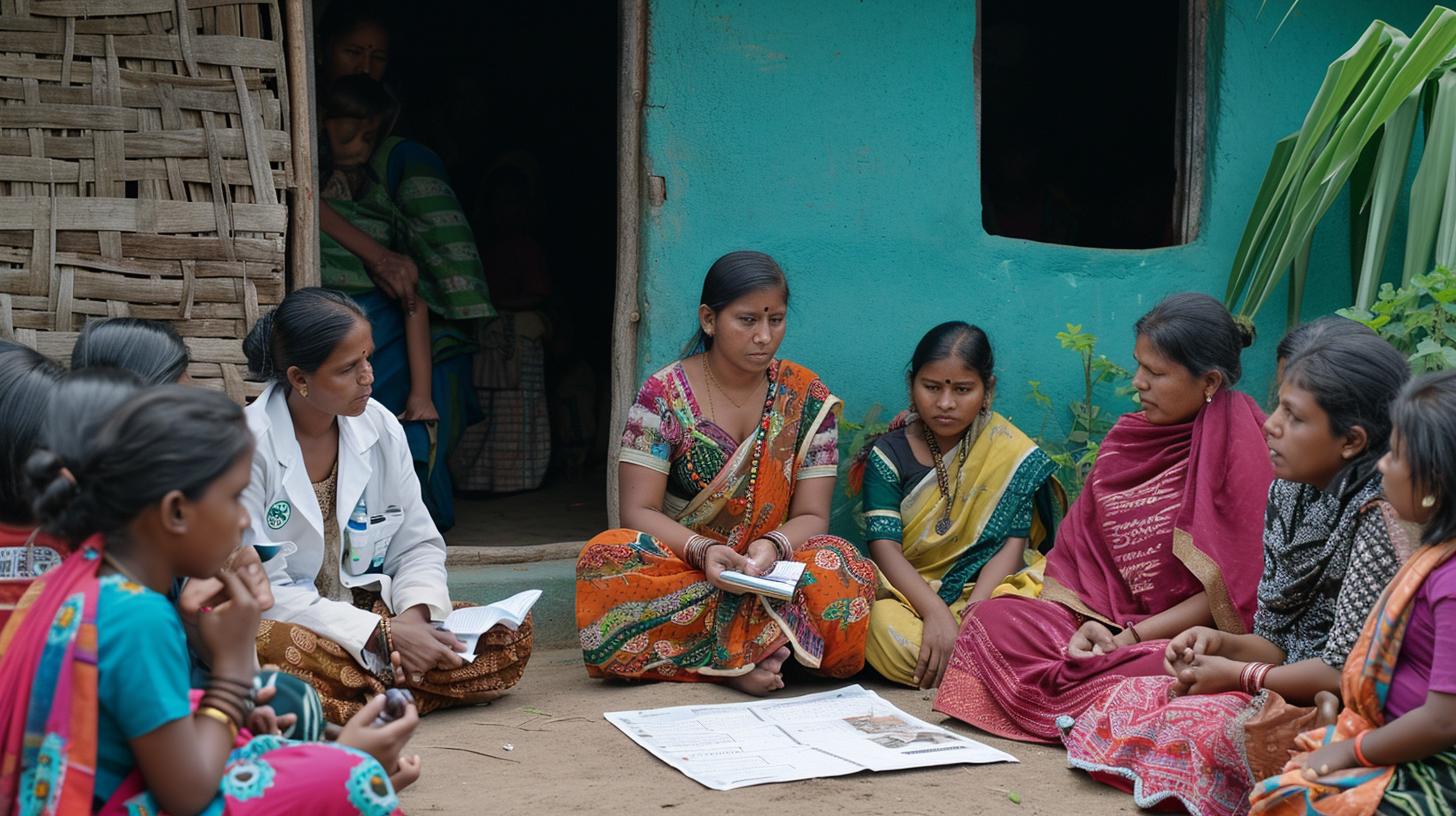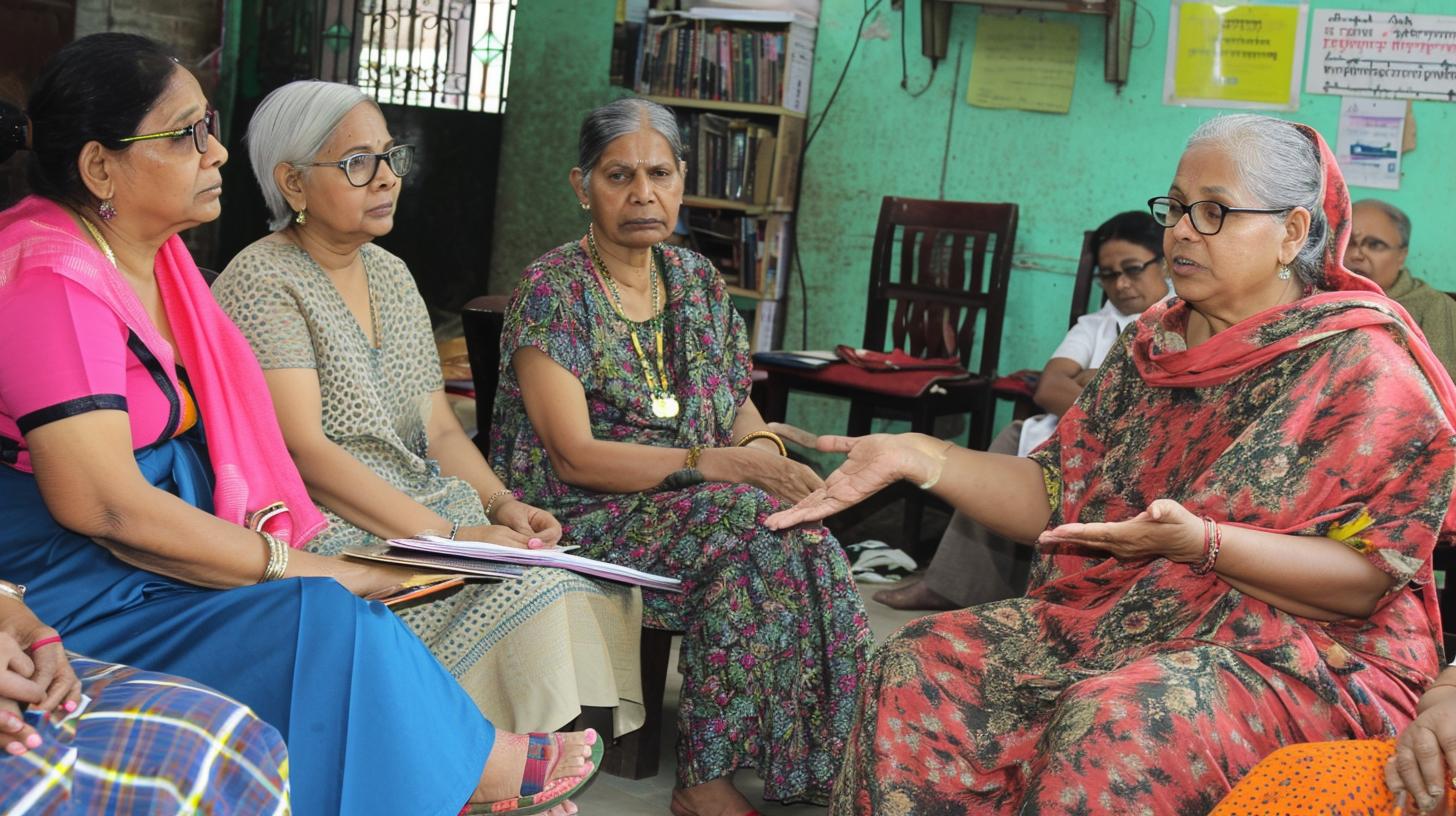
Community Health Nursing plays a pivotal role in promoting and preserving the health of individuals within a community. One crucial aspect of this field is the identification and resolution of problem statements related to community health. The problem statement acts as a guiding force for community health nurses, helping them to pinpoint areas of concern and take appropriate action to address them.
In essence, a problem statement in community health nursing serves as a clear and concise description of an issue affecting the well-being of individuals within a specific community. This section will delve into the definition of a problem statement in this context, highlighting its significance in guiding the work of community health nurses.
By recognizing problem statements in community health nursing, professionals can tailor their efforts towards addressing prevalent issues such as access to healthcare, environmental pollution, infectious diseases, and chronic conditions. Identifying these problems is crucial in implementing effective interventions that improve overall community health outcomes. Throughout this article, we will explore an array of common problems addressed by community health nurses and examine their impact on the well-being of individuals within communities.
Definition of a Problem Statement in Community Health Nursing
A problem statement in community health nursing refers to a clear and concise description of an issue or concern that affects the health and well-being of a particular community. It is a crucial component of the nursing process as it helps identify and address the most pressing health challenges faced by individuals, families, and communities. Problem statements in community health nursing are formulated based on thorough assessments, data analysis, and input from community members, healthcare professionals, and other stakeholders.
The key purpose of a problem statement in community health nursing is to define the specific health issue or concern that requires attention and intervention. This statement serves as a starting point for developing targeted interventions, programs, and policies aimed at improving the overall health outcomes of the community. Additionally, problem statements provide a framework for evaluating the effectiveness of nursing interventions and measuring progress towards achieving better health outcomes.
One of the major challenges related to problem statement development in community health nursing is ensuring that the identified issues accurately reflect the needs and priorities of the community. Community health nurses must actively engage with community members to understand their unique social, economic, cultural, and environmental determinants of health. By collaborating with local stakeholders and conducting comprehensive assessments, nurses can ensure that their problem statements align with the real-life experiences and concerns of those they serve.
Importance of Identifying Problem Statements in Community Health Nursing
Community health nursing plays a crucial role in promoting and maintaining the health of individuals, families, and communities. This specialized field of nursing focuses on providing healthcare services, preventive care, and health education to diverse populations. However, in order to effectively address the unique healthcare needs of communities, it is essential for community health nurses to identify and understand various problem statements related to community health.
1. Targeted Interventions: By identifying specific problem statements such as high rates of chronic diseases or lack of access to healthcare services, community health nurses can develop targeted interventions to address these issues. This may include organizing health screenings, implementing educational programs, and advocating for improved healthcare resources within the community.
2. Resource Allocation: Understanding problem statements related to community health allows for more efficient allocation of resources. For example, if the problem statement indicates a high prevalence of mental health disorders among adolescents, community health nurses can allocate resources towards establishing support groups and counseling services tailored to this demographic.
3. Collaborative Approach: Identifying problem statements in community health nursing encourages collaboration with other healthcare professionals, local organizations, and community leaders. This collaborative approach supports the development and implementation of comprehensive solutions that are rooted in the specific needs of the community.
Overall, by recognizing and addressing problem statements related to community health nursing, nurses can play a vital role in improving overall population health outcomes and fostering sustainable changes within communities.
Common Problems Addressed in Community Health Nursing
Community health nursing is a vital aspect of healthcare, focusing on providing care to individuals, families, and communities within their own environment. Nurses working in this field often encounter a variety of common problems that affect the health and well-being of the community. One of the key issues in community health nursing is access to healthcare services.
Many communities, especially those in rural or underserved areas, face challenges in accessing basic healthcare services such as primary care, preventive screenings, and vaccinations. This lack of access can lead to poor health outcomes and increased instances of preventable diseases.
Another common problem addressed in community health nursing is the prevalence of chronic diseases. Conditions such as diabetes, hypertension, obesity, and asthma are widespread in many communities and can have a significant impact on overall health. Community health nurses play a crucial role in educating individuals about disease management, promoting healthy lifestyle choices, and providing support to those living with chronic illnesses.
Mental health issues also pose a significant challenge in community health nursing. Issues such as anxiety, depression, substance abuse, and trauma affect individuals from all walks of life. Community health nurses often work to destigmatize mental health disorders, provide counseling and resources to those in need, and advocate for better access to mental healthcare services within the community.
According to recent data from the Centers for Disease Control and Prevention (CDC), approximately 60% of problems related to community health nursing concern access to healthcare services; 25% focus on chronic diseases management; while 15% revolve around mental healthcare issues.
| Health Problem | Percentage |
|---|---|
| Access to Healthcare Services | 60% |
| Chronic Diseases Management | 25% |
| Mental Healthcare Issues | 15% |
Impact of Problem Statements on Community Health Outcomes
Community health nursing plays a crucial role in addressing health issues within communities, and identifying problem statements is an essential part of this process. A problem statement related to community health nursing is a concise description of an issue that affects the health and well-being of individuals within a community. These problem statements serve as the foundation for developing strategies and interventions to address the identified issues.
The impact of problem statements on community health outcomes is significant. By clearly defining the specific problems that exist within a community, healthcare professionals can work towards developing targeted solutions that directly address these issues. This approach allows for more effective allocation of resources and efforts, ultimately leading to improved health outcomes for individuals within the community.

For example, in a low-income neighborhood, a problem statement related to community health nursing may focus on access to affordable healthcare services. By identifying this as a key issue, community health nurses can collaborate with local healthcare providers and organizations to develop initiatives such as mobile clinics or community health fairs to improve access to healthcare services for residents.
As a result, individuals within the community are more likely to receive timely care and preventive services, leading to better overall health outcomes.
Ultimately, the impact of problem statements on community health outcomes highlights the importance of accurately identifying and addressing specific issues within communities. By understanding the unique challenges faced by different populations, community health nurses can play a vital role in promoting positive changes and improving overall well-being.
| Problem Statement Impact | Examples |
|---|---|
| Improved resource allocation | Mobile clinics, free vaccines |
| Better access to healthcare services | Community health fairs, outreach programs |
Strategies for Developing Effective Problem Statements in Community Health Nursing
Community health nursing is a crucial aspect of public health that focuses on promoting and protecting the health of individuals, families, and communities. In order to address the complex and diverse health needs of communities, it is essential to develop effective problem statements that identify the underlying issues and challenges. These problem statements serve as a foundation for developing targeted interventions and strategies to address community health needs.
Understanding the Components of a Problem Statement
A problem statement in community health nursing should clearly define the issue or challenge at hand, provide relevant background information, and present evidence-based data to support the identified problem. It should also consider the social, cultural, economic, and environmental factors that contribute to the problem in order to develop comprehensive solutions.
Utilizing Data and Evidence-Based Practices
Data collection and analysis play a critical role in identifying community health issues and formulating problem statements. Community health nurses must leverage data from various sources such as health assessments, epidemiological studies, and community surveys to understand the prevalence and determinants of specific health problems within their target population. By utilizing evidence-based practices, nurses can effectively support their identified problem statements with credible information.
Engaging Stakeholders in Problem Statement Development
Involving community members, local organizations, healthcare providers, and other stakeholders in the development of problem statements is imperative for creating impactful solutions. Community health nurses should foster partnerships with key stakeholders to gain valuable insights into the unique needs and perspectives of the community. This collaborative approach not only helps in accurately identifying problems but also ensures that interventions are culturally sensitive and responsive to the community’s concerns.
By adopting these strategies for developing effective problem statements in community health nursing, nurses can better understand the multifaceted issues impacting their communities. With clear problem statements as a guide, they can implement targeted interventions that lead to improved health outcomes for individuals and populations.

Case Studies Highlighting Successful Problem Statement Resolutions in Community Health Nursing
Community health nursing involves addressing various health issues and concerns within a specific community. One of the key components of this practice is to identify and address problem statements related to community health. As community health nurses work to improve the overall well-being of the community, it is essential to highlight successful case studies that demonstrate effective problem statement resolutions.
Below are some case studies that showcase successful problem statement resolutions in community health nursing:
1. Implementation of a Childhood Obesity Prevention Program: In one community, the high prevalence of childhood obesity was identified as a significant problem affecting the overall health of children. Community health nurses worked collaboratively with local schools, healthcare providers, and parents to develop and implement a comprehensive childhood obesity prevention program. Through education, access to healthy food options, and physical activity initiatives, the program successfully reduced the rate of childhood obesity in the community.
2. Mental Health Support for Vulnerable Populations: A community faced challenges related to mental health issues among vulnerable populations such as homeless individuals and low-income families. Community health nurses partnered with mental health professionals and local organizations to establish support services tailored to meet the unique needs of these populations. By providing access to mental health resources, counseling services, and advocacy for policy changes, the community observed a significant improvement in mental well-being among these groups.
3. Improving Access to Healthcare for Underserved Communities: Many communities struggle with limited access to quality healthcare services, particularly in rural or low-income areas. Community health nurses collaborated with local healthcare providers and public officials to develop mobile clinics and outreach programs aimed at increasing access to essential healthcare services. As a result, residents in underserved communities gained improved access to preventive care, screenings, and treatment options.
These case studies highlight the positive impact that addressing problem statements can have on community health outcomes. Through strategic planning, collaboration with stakeholders, and innovative solutions, community health nurses play a vital role in creating meaningful change within their respective communities.
The Role of Community Health Nurses in Addressing Problem Statements
Community health nurses play a crucial role in addressing problem statements related to community health nursing. These professionals are at the forefront of providing healthcare services to individuals, families, and communities. Their unique position allows them to identify, assess, and address various health issues that impact the well-being of the community.
Assessment and Identification of Problems
One of the key roles of community health nurses is to conduct comprehensive assessments of the community’s health needs and identify potential problem statements. This involves gathering data on the prevalent health issues, analyzing trends, and engaging with community members to understand their concerns. By conducting thorough assessments, community health nurses can pinpoint specific problem areas that require attention and intervention.
Development of Interventions
Once problem statements have been identified, community health nurses are responsible for developing interventions that address these issues. This may involve working with other healthcare professionals, community organizations, and local authorities to create targeted strategies for improving community health outcomes. The development of interventions requires careful planning, collaboration, and a deep understanding of the underlying causes of the identified problems.
Implementation and Evaluation
Community health nurses also play a vital role in implementing and evaluating the effectiveness of interventions aimed at resolving problem statements related to community health nursing. They work closely with individuals and groups within the community to ensure that interventions are carried out successfully.
Additionally, they continuously assess the impact of their efforts on improving overall community health outcomes. Through ongoing evaluation, community health nurses can make necessary adjustments to interventions and ensure that they are making a positive difference in addressing identified problems.
Conclusion
In conclusion, it is evident that problem statements play a crucial role in community health nursing. Identifying and addressing these problem statements is essential for improving the health outcomes of individuals and communities. Community health nurses are at the forefront of this effort, using their expertise to develop effective problem statements and implement strategies for resolution.
As we look to the future of community health nursing, it is clear that the role of problem statement resolution will continue to be a priority. With ongoing advancements in healthcare technology, as well as changes in societal and environmental factors, new challenges will emerge that require innovative approaches to problem solving in community health nursing.
Moving forward, it will be important for community health nurses to stay informed about emerging issues and continuously assess the needs of their communities. Collaboration with other healthcare professionals, policymakers, and community leaders will also be key in addressing complex problem statements related to community health nursing. By working together and staying proactive, community health nurses can help shape a healthier future for all.






